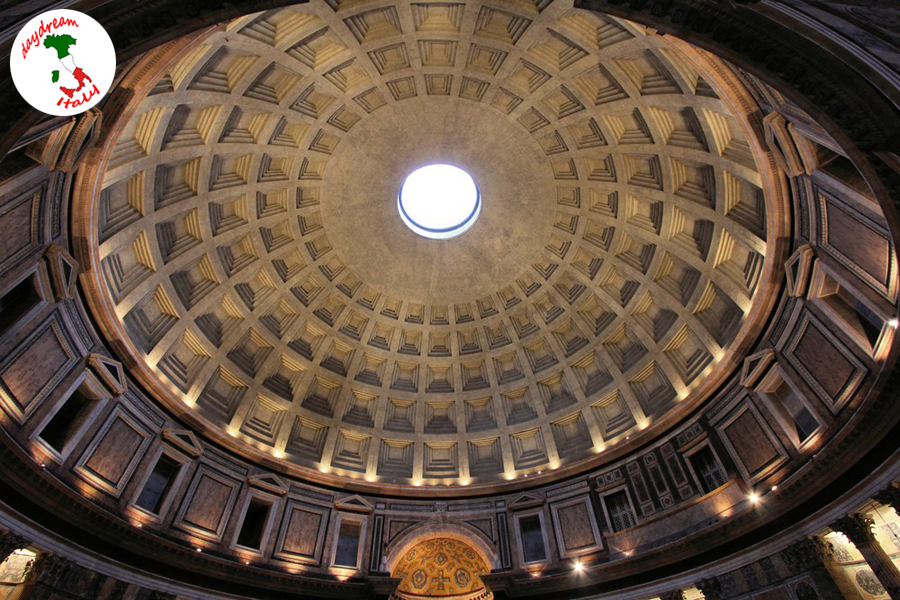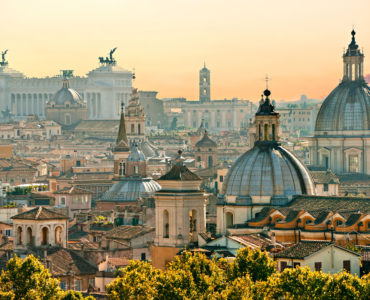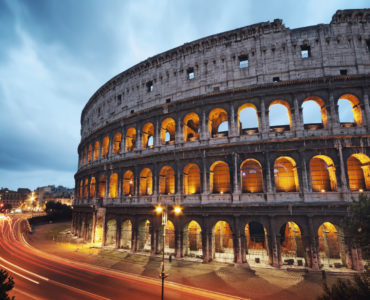The Pantheon is the best preserved monument of ancient Rome and one of the most admired in the city.
Built by Marcus Vipsanio Agrippa in 27 BC on the place where the legend tells that Romulus, the founder of Rome, at the time of his death was grasped by an eagle and taken to heaven among the gods.
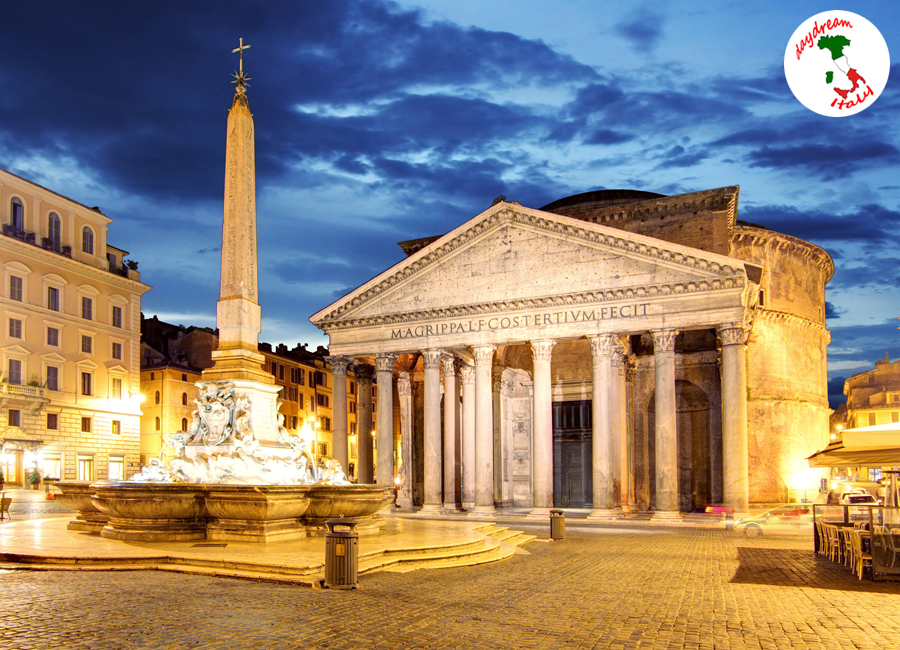
The Pantheon was born as a temple dedicated to all Roman gods: the name derives from the two Greek words “pan” (all) and “theon” (god). Destroyed by repeated fires it was rebuilt between 120 and 126 AD by the emperor Hadrian in his current greatness. Although built in a different structure from the original, the emperor Hadrian wanted to affix the Latin inscription “M.Agrippa L.F.Cos. Tertium.Fecit ” which means “Marcus Agrippa, Lucio’ son, consul for the third time, he built“.

The Pantheon still represents one of the most beautiful and impressive works of humanity that has inspired many later architets. The Pantheon is in fact one of the most copied and imitated works of antiquity all over the world. It boasts the greatest masonry dome in the history of architecture. Its architectural perfection makes it an ideal perfect sphere, as the height of the dome is equal to the diameter of its walls (43.30 meters). His architectural harmony was aimed at equating all the gods. Along its circumference the seven divinities connected to the cult of the planets (as conceived in antiquity) were situated in seven niches between two Corinthian columns: the Sun, the Moon, Venus, Saturn, Jupiter, Mercury and Mars. Following the process of Christianization of the Roman Empire, some of them were used for the construction of altars dedicated to Christian martyrs. It was in fact in the 7th century that Pope Boniface IV transformed it into a Christian Basilica called Santa Maria della Rotonda or Santa Maria ad Martyres.

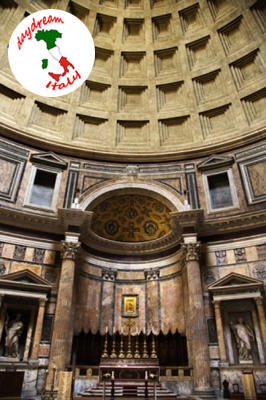
Visiting the Pantheon we will first admire the imposing front with the Latin inscription from the Piazza della Rotonda. To access the temple we will have to cross the pronaos with its imposing granite columns. The 16 columns over 14 meters high are in gray granite and pink granite quarried in Aswan, in ancient Egypt. The transport to Rome of these monolithic columns was undoubtedly a titanic undertaking. Through the columns we reach the enormous 7 meter high bronze door. Beyond the door we will remain breathless admiring the vast empty space of the temple. The beautiful and very high dome has at its center the oculus, a huge hole of nine meters in diameter from which filters the natural light that illuminates the interior. The rain also filters from this oculus and this is why the floor is slightly convex and equipped with a filtering system to drain rainwater.

Inside the Pantheon some of Italian Royal Family members are buried as well as some of the great Renaissance artists, including Raffaello Sanzio.
